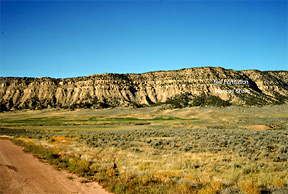
There are three main landforms:
These notes are a supplement and are in no way a substitute for what happens in class. In class there are activities and exercises that involve application of the material. The test will involve not only memorization of facts but also the application and use of those facts in a meaningful manner. This is higher order learning and more relevant to the “real world”.
| Landforms, Mountains, and Maps |

There are three main landforms:

-Plains:
Plains are large flat areas
of lands that have only small changes in elevation.
-There are 2 types of plains:
Coastal Plain:
Low large flat areas of lands
along the coast
Made from deposits of silt and
sediment
Have Rich fertile soil good for
farming ( cotton,citrus,fruits...)
Ex.Atlantic Coastal Plain/,
Gulf Coastal Plain
Interior Plains
Low large flat areas of lands
located inland on a continent
Have a higher elevation than coastal
plain
Made from the deposits from the
hills and mountains
Have good soil for farming (wheat
oats barley) Bread basket
Flat grassy dry areas
Ex. Great Plains - Nebraska,
Kansas, Arkansas
Plateaus
A plateau is a large, flat
area of land that is higher than the surrounding land (raised).
Uplifted by earth's forces
Look like plains but with a higher
elevation
Dry desert like areas ofton used
for animal grazing
Ex. Colorado Plateau

Mountains
A mountain is a very tall high,
natural place on Earth - higher than a hill. It has high elevation, narrow
peaks andstep sides. The tallest mountain on Earth is Mt. Everest.
There are 4 types of mountains:
Folded:
 |
Folded Mountains are caused by pressure being applied from both or one side. In the diagram , you can see that the pressure forces the mountains to bend and fold. On the top of the mountains, several different layers are exposed as a result of eriosion. Appalachiansn |
Upwarped:
 |
Formed when blocks of Earth's crust are pushed
up by
pressure directly beneath the land, southern Rockies, Adirondacks |
Fault Block
 |
Huge tilted slabs of rock break due
to pressure and slide past one another (along fault planes), Grand Tetons in WY, Sierra Nevadas in CA |
| Form when molten material reaches the surface through a weak area in the crust. Mount St. Helens |